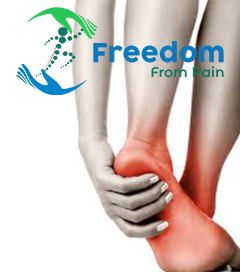The foot is a strong mechanical structure made up of 26 bones, 33 joints and more than a hundred muscles, ligaments and tendons that fit together meticulously along two crossing arches. The ankle joint connects the foot to the lower leg.
Many things can cause foot pain (or feet pain) but the most common causes are trauma, injuries and diseases.
Foot pain is often short-term or acute, lasting a few days to a few weeks and being mild in nature. It usually improves on its own with self-care and simple measures. It is called subacute foot pain if it lasts between 4 and 12 weeks.
Chronic foot pain, on the other hand, lasts for 3 months or longer, even after the initial injury or underlying cause of pain has been treated. Chronic foot pain can occur in a small group of people that get acute foot pain. This means that the pain can continue for much longer than expected and in some of those cases the chronic lower foot pain can be difficult to treat.
FOOT PAIN SYMPTOMS :
Foot pain can occur suddenly or slowly, depending on the cause. Foot pain usually occurs immediately after an injury although sometimes the onset of symptoms can be delayed.
Symptoms may include a ankle pain or a stiff foot. Restrictions in certain movements might include inability to bring the foot up (heel walk) or down (walking on toes). Foot weakness may also be present. Foot pain may radiate anywhere in the region and even up into the leg. Sometimes pain may radiate down into the foot. There might be tingling, numbness, pins and needles and weakness.

Common causes of foot pain include:
- Ligament damage
- Soft tissue damage
- Muscle strains
- Fractures
- High arches or very flat feet
- Bunions and Corns
- Arthritis
- Diabetic feet


